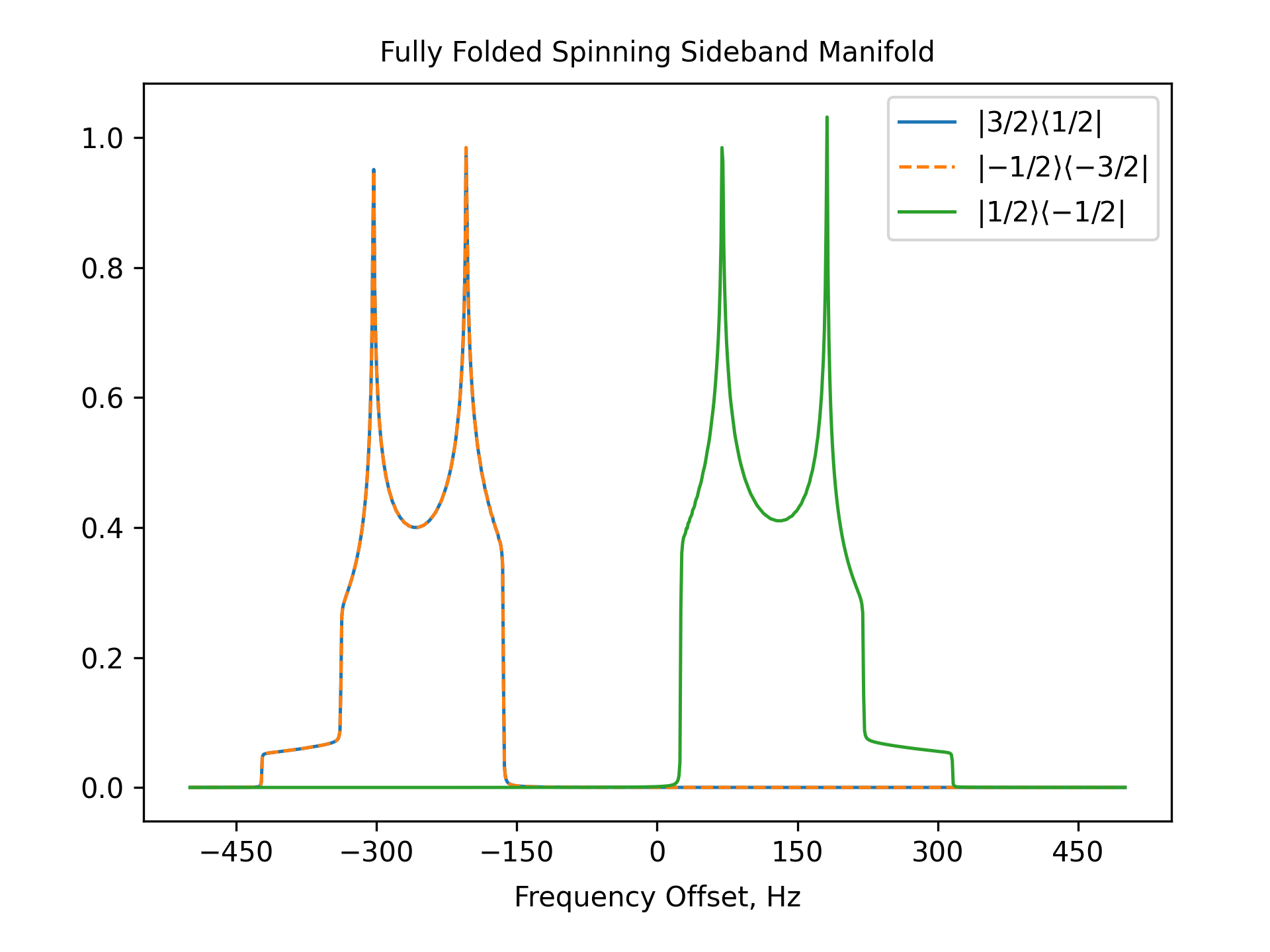Fully Folded Quadrupolar Sideband Manifold

quad_folded
****** The System **************************************** spectrometer(MHz) 500 spinning_freq(kHz) 10 channels X(200 3/2) nuclei X atomic_coords * cs_isotropic * csa_parameters * j_coupling * quadrupole 1 1000 0.25 0 0 0 dip_switchboard * csa_switchboard * exchange_nuclei * bond_len_nuclei * bond_ang_nuclei * tors_ang_nuclei * groups_nuclei * ******* Pulse Sequence ************************************** CHN 1 timing(usec) (1000)1024 power(kHz) 0 phase(deg) 0 freq_offs(kHz) 0 ****** Variables ********************************************* fig_options="--lines '-,--,-'" fig_title="Fully Folded Spinning Sideband Manifold" ******* Options ********************************************** rho0 I1x observables |3/2><1/2| |-1/2><-3/2| |1/2><-1/2| EulerAngles asgind100o n_gamma * line_broaden(Hz) 0.5 zerofill * FFT_dimensions 1 Hz options -re -py *************************************************************** -- Each coherence is observed individuallly -- Since the sideband manifold is completely folded, the first-order broadening is not visible in this spectrum and only the second-order broadening remains. Note that only the satellite transitions are actually folded, while the central transition is in the infinite spinning frequency limit here. -- Specifying option -isf (use infinite spinning frequency approximation) with this input file leads to the same spectrum even for the satellite transitions b/c the ISF approximation is equivalent to the complete folding of hte sideband manifold -- See quad_full for the full unfolded sideband manifold and quad_sb for an individual sideband
